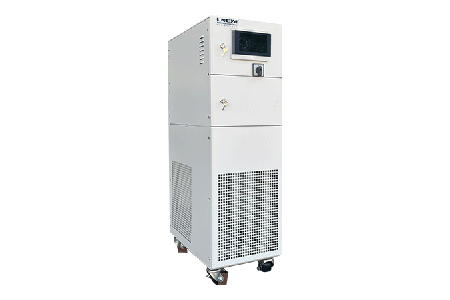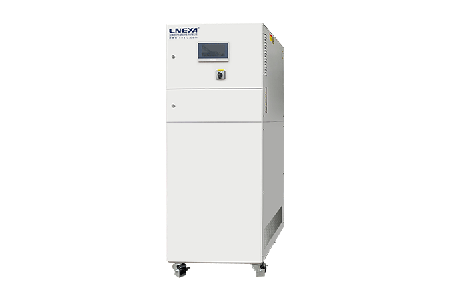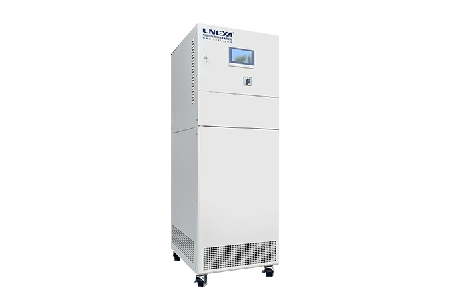Что такое хладагент и теплоноситель в холодильной системе?
Many people have trouble distinguishing between refrigerants and coolants. This blog post explains the definitions of both, highlights the key differences between them, and explores their respective roles in a chiller’s refrigeration system.
What Is Refrigerant?
We know that in nature, heat always flows from warmer areas to cooler ones. What makes a refrigerant unique—and earns it the name—is its ability to reverse this natural flow. A refrigerant is capable of taking in heat from colder air and discharging it into warmer air. In effect, it extracts “cooling” from warm air by redirecting the flow of heat. This ability to create a cooling effect even in a hot environment is what defines a refrigerant.
What Is Coolant?
A coolant plays only a supporting role in refrigeration systems. Its primary function is to carry and transport heat from a higher-temperature area to a lower-temperature one. It simply serves as a medium for the natural flow of heat.
For instance, in the refrigeration cycle system of a chiller, heat from the object being cooled is first transferred to the coolant. The coolant then carries that heat to the refrigerant, which is at a lower temperature. Throughout this process, the direction of heat transfer always follows nature’s rule—moving from high temperature to low temperature.
Refrigerant VS Coolant: Understanding The Difference
Refrigerants, also known as cooling media, play a key role in chiller refrigeration systems by absorbing, transferring, and releasing heat. During operation, the refrigerant undergoes phase changes as it switches between liquid and gas states.
In general, refrigerants are expected to have excellent thermodynamic properties. Specifically, the critical temperature should be higher than the condensation temperature, and the saturated pressure at the condensation point should not be excessively high. Optimal refrigerants also feature a low normal boiling point, low specific heat capacity, low adiabatic index, high heat transfer per unit volume, high thermal conductivity, low viscosity, low density, and robust chemical stability.
However, a coolant functions like a delivery agent, carrying the cooling energy generated by the refrigeration system to the areas requiring temperature control. During this process, the coolant remains in the same phase and does not undergo any phase change.

What Are The Common Types Of Refrigerant Used In Industrial Chillers?
- R23
- R404A
- R508B
- R507C
- R134A
- R407C
- R410A
What Are The Common Types Of Coolant For Industrial Chillers?
- Вода
- Thermal oil (heat transfer oil)
Thermally conductive silicone oil is non-toxic, colorless, and odorless. When used under pressure in a closed system, its concentration needs to be monitored.
- Ethylene glycol-water solution
An ethylene glycol-water solution is a highly effective option for low-temperature control applications.
- Brine solution (saltwater solution)
Brine solutions—typically sodium chloride or calcium chloride in water—are highly corrosive. When used in a chiller system, special materials are required for the heat exchanger and pump to withstand the corrosion.
- Fluorinated oil (fluorinated fluid)
Fluorinated oil is non-flammable and is primarily used in the semiconductor industry. However, systems that use fluorinated oil typically involve higher investment costs.
- Ethanol
Ethanol has a high risk factor—it is flammable and potentially explosive. It is suitable for low-temperature applications and can be used in refrigeration systems down to -110°C (-166°F). When in use, the circulation pump must be properly sealed. If the volume used exceeds 500 liters, concentration monitoring is required.
- Liquid dichloromethane
When using liquid dichloromethane as a secondary coolant, the surrounding environment must be open and well-ventilated.
The Role Of Refrigerant And Coolant In Efficient Cooling
In a chiller system, the refrigerant moves through a closed-loop cycle. Inside the evaporator, it absorbs heat from the object being cooled and changes into a vapor. It then moves to the condenser, where it discharges the absorbed heat into the surrounding environment and transforms back into a liquid. The chiller’s refrigeration system relies on the phase changes of the refrigerant to achieve cooling.
The coolant, or cooling medium, is first cooled by the refrigerant in the evaporator. It is then directed to the cooling equipment, where it absorbs heat from the object being cooled, and subsequently returns to the evaporator to be cooled once more. This cycle continues to transfer cooling to the target environment.
In a refrigeration system, the refrigerant is essential—there can be a system without a coolant, but never without a refrigerant.
Добавьте нашего менеджера по работе с клиентами с помощью QR-кода ниже

WeChat/телефон
86 18914253067

86 13912479193

Адрес электронной почты
sales@cnzlj.com
Recommended chillers

LTZ +5℃-90℃
гликолевые охладители
Мощность охлаждения 4 кВт ~ 20 кВт
Мощность нагрева 3,5 кВт ~ 15 кВт
temperature accuracy ±0.3℃

LTZ -40℃~90℃
охладители жидкости
Мощность охлаждения 0,7 кВт ~ 11,5 кВт
Мощность нагрева 2,5 кВт ~ 10 кВт
temperature accuracy ±0.3℃

LTZ +5℃~30℃
лабораторные охладители
Мощность охлаждения 23кВт~155кВт
Circulation Pump MAX 5m³/h~28m³/h 2bar
temperature accuracy ±0.5℃

LTZ -25℃~30℃
охладители с температурой ниже нуля
Мощность охлаждения 7 кВт ~ 64,5 кВт
Circulation Pump MAX 2.5m³/h~15m³/h 2bar
temperature accuracy ±0.5℃

LTZ -45℃~20℃
охладители охлаждающей жидкости
Мощность охлаждения 5,7 кВт ~ 32,4 кВт
Circulation Pump MAX 1.5m³/h~7.7m³/h 2bar
temperature accuracy ±0.5℃

LTZ -60℃~-30℃
чиллеры с воздушным охлаждением
Мощность охлаждения 6,2 кВт ~ 31,7 кВт
Circulation Pump MAX 2.4m³/h~12.1m³/h 2bar
temperature accuracy ±0.5℃

LTZ -80℃~-50℃
чиллеры с водяным охлаждением
Мощность охлаждения 3,7 кВт ~ 30 кВт
Circulation Pump MAX 2.3m³/h~12m³/h 2bar
temperature accuracy ±0.5℃

LTZ -115℃~-80℃
криогенные охладители
мощность охлаждения 0,6 кВт ~ 2,8 кВт
Циркуляционный насос MAX 20 л/мин ~ 40 л/мин 2 бар
temperature accuracy ±0.5℃
 LNEYA Промышленные чиллеры Производитель Поставщик
LNEYA Промышленные чиллеры Производитель Поставщик










